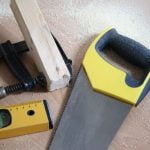Are you considering making improvements to your home, but not sure what is the best loan to do home improvements? Home improvement projects can be a significant investment, and for many homeowners, financing is a crucial aspect of making these enhancements a reality.
In this article, we will explore the various options available for funding home improvement projects and weigh the pros and cons of each. From personal loans to home equity loans and refinancing options, we will provide insights into choosing the right loan for your specific needs.
Making improvements to your home is not just about enhancing its visual appeal, but also about increasing its value and creating a more comfortable living space for you and your family. Whether it’s remodeling the kitchen, adding an extra bedroom, or upgrading the landscaping, investing in your property can have long-term benefits.
However, deciding on the best way to finance these improvements can be challenging. It’s essential to understand the different types of loans available for home improvements and how each option can impact your finances.
Throughout this article, we will discuss various loan options for home improvements, including personal loans, home equity loans, and refinancing. We’ll examine the advantages and disadvantages of each type of loan to help you make an informed decision about which one best suits your needs.
Additionally, we’ll provide tips for choosing the right lender and share real-life case studies of successful home improvement projects financed through different loan options. By the end of this article, you will have a clearer understanding of the best loan to do home improvements that aligns with your financial goals and renovation plans.
Types of Loans for Home Improvements
When it comes to home improvements, there are different types of loans available to explore. Understanding your options is crucial in making informed decisions about financing your project. One common type of loan for home improvements is a personal loan. Personal loans are unsecured loans that can be used for a variety of purposes, including renovations and repairs. These loans typically have fixed interest rates and terms, making it easier to budget for the monthly payments.
Another option to consider is a home equity loan. This type of loan allows homeowners to borrow against the equity in their homes, using the property as collateral. Home equity loans often have lower interest rates compared to personal loans and can be beneficial for larger renovation projects.
Refinancing is another avenue to explore for home improvements. By refinancing your mortgage, you can take advantage of lower interest rates and use the additional funds for renovations or repairs. This can be an attractive option if you’re looking to make substantial upgrades to your home.
It’s important to carefully consider each option and weigh the pros and cons before deciding on the best loan for your home improvements. Factors such as interest rates, repayment terms, and potential impact on your credit score should all be taken into account when exploring your borrowing options.
| Types of Loans | Key Features |
|---|---|
| Personal Loan | Unsecured, fixed interest rates |
| Home Equity Loan | Borrow against home equity, lower interest rates |
| Refinancing | Lower interest rates, use additional funds for renovations |
The Pros and Cons of Personal Loans for Home Improvements
Personal loans for home improvements can be a convenient option for homeowners looking to renovate or upgrade their property. One of the main advantages of personal loans is that they can be obtained relatively quickly, making them ideal for urgent home improvement projects. Additionally, personal loans typically do not require any collateral, which means that borrowers do not have to put their home or other assets at risk.
However, there are also some downsides to consider when it comes to using personal loans for home improvements. Personal loans often come with higher interest rates compared to other types of home improvement financing, such as home equity loans or refinancing options.
This means that borrowers may end up paying more in the long run, especially if they choose a longer repayment term. Additionally, the amount that can be borrowed with a personal loan may be limited, which could impact the scope of larger home improvement projects.
It’s important for homeowners to carefully consider their financial situation and long-term goals before opting for a personal loan for home improvements. While personal loans offer flexibility and speed, they also come with higher costs and potential limitations on borrowing amounts. As with any financial decision, careful consideration and research are crucial in order to make an informed choice that aligns with your specific needs and circumstances.
The Benefits of Home Equity Loans for Renovations
A home equity loan is a type of loan that allows homeowners to borrow money using the equity in their homes as collateral. This type of loan can be a great option for financing home improvement projects because it typically offers lower interest rates compared to personal loans or credit cards. Home equity loans also allow borrowers to access a larger amount of funds, making it suitable for larger renovation projects.
One of the main benefits of using a home equity loan for renovations is the potential tax deduction. In some cases, the interest paid on a home equity loan may be tax deductible, which can result in significant savings for homeowners. Additionally, because the loan is secured by the value of the home, lenders are often willing to offer more favorable terms and lower interest rates, making it a cost-effective option for financing improvements.
Another advantage of home equity loans for renovations is that they provide a lump sum payment upfront, which can make budgeting for the project easier. This can be especially beneficial for major renovations that require significant funds upfront. Additionally, home equity loans often have fixed interest rates and predictable monthly payments, providing borrowers with a sense of stability and predictability when it comes to managing their finances during the renovation process.
Exploring the Option of Refinancing for Home Improvements
Refinancing is an option that homeowners can consider when they need to fund their home improvement projects. Refinancing involves replacing an existing mortgage with a new one, ideally at better terms. When homeowners refinance, they have the opportunity to borrow additional funds on top of the amount needed to pay off the original mortgage. This extra money can then be used for renovations or improvements in the home.
One of the main advantages of refinancing for home improvements is the potential for lower interest rates. If a homeowner can secure a new mortgage at a lower rate than their existing one, it could result in significant savings over time. Additionally, by refinancing and borrowing more money at once, homeowners may benefit from a lump sum payment that can cover all their renovation needs without having to take out multiple smaller loans.
However, it is essential for homeowners to carefully consider the costs and potential downsides of refinancing for home improvements. Refinancing typically involves closing costs and fees, which can add up to thousands of dollars. Homeowners should also factor in the length of time it will take to recoup these costs through savings on interest rates before deciding if this option is right for them.
| Advantages | Disadvantages |
|---|---|
| Potential for lower interest rates | Closing costs and fees involved |
| Lump sum payment covering all renovation needs | Lengthy process of recouping costs through savings |
Understanding the Process of Applying for a Home Improvement Loan
Applying for a home improvement loan can be a daunting task, but understanding the process can make it much more manageable. Whether you choose a personal loan, home equity loan, or refinancing option, the steps for applying are generally similar.
Determine Your Budget and Needs
Before applying for a home improvement loan, it’s essential to have a clear understanding of your budget and the specific improvements you want to make. Take the time to assess your current financial situation and determine how much you can realistically afford to borrow. Consider getting quotes from contractors or suppliers to get a better idea of the costs involved in your project.
Research Lenders and Loan Options
Once you have a clear idea of your budget and needs, it’s time to research different lenders and loan options available to you. Compare interest rates, loan terms, and any fees associated with the loans. Additionally, take into consideration whether you want a lump sum payment (as with a personal loan) or access to funds over time (as with a home equity line of credit).
Gather Necessary Documentation
When applying for a home improvement loan, be prepared to provide documentation such as proof of income, employment verification, tax returns, and information about your existing mortgage if applicable. Having this information ready can help streamline the application process and increase your chances of approval.
By following these steps and staying organized throughout the process, you can make applying for a home improvement loan more efficient and increase your chances of securing financing for your project.
Tips for Choosing the Right Lender for Your Home Improvement Loan
When it comes to choosing the right lender for your home improvement loan, there are several factors to consider. Here are some tips that can help you make an informed decision:
Research Different Lenders
Before making a decision, take the time to research and compare different lenders. Look into their loan options, interest rates, fees, and customer reviews. Consider both traditional banks and online lenders to see which one offers the best terms for your specific needs.
Consider Loan Terms and Conditions
Pay close attention to the terms and conditions of the loan offered by each lender. Look at factors such as repayment period, interest rates, and any potential penalties or fees for early repayment. Make sure that the loan terms align with your financial situation and renovation timeline.
Check Lender’s Reputation
It’s important to choose a reputable lender with a history of reliable service and transparent lending practices. Check online reviews, ratings from consumer advocacy organizations, and any complaints filed against the lender with the Better Business Bureau. A trustworthy lender will provide clear information about their loans and be responsive to any inquiries or concerns you may have.
By following these tips, you can navigate the process of choosing the right lender for your home improvement loan with confidence. Remember that finding a reliable lender is crucial in ensuring a smooth borrowing experience and successful completion of your renovation project.
Case Studies
When it comes to financing home improvement projects, choosing the right loan option can make a significant difference in the overall success of the project. Let’s take a look at some real-life examples of homeowners who have successfully completed their home renovation projects using different loan options.
One example is the Smith family, who wanted to remodel their outdated kitchen and bathrooms. After exploring their options, they decided to go with a personal loan for its flexibility and quick approval process. The Smiths were able to complete their renovations within budget and on time, thanks to the ease of access to funds provided by the personal loan.
On the other hand, the Johnsons opted for a home equity loan to add an extension to their home. By leveraging the equity in their property, they were able to secure a lower interest rate compared to other loan options. This allowed them to take on a larger project and increase the value of their property without draining their savings.
Lastly, the Martinez family chose to refinance their mortgage in order to fund their home improvement projects. By taking advantage of lower interest rates, they were able to free up additional funds for renovations while also potentially reducing their monthly mortgage payments. This option provided them with the financial flexibility needed for large-scale renovations.
These case studies highlight how different loan options can cater to various home improvement needs and financial situations. By considering real-life examples, homeowners can gain valuable insights into which loan option may be most suitable for their own renovation projects.
Conclusion
In conclusion, when it comes to choosing the best loan for home improvements, it is important to consider the specific needs and financial situation of each homeowner. Personal loans offer flexibility and convenience, but they often come with higher interest rates.
On the other hand, home equity loans can provide lower interest rates and larger loan amounts, but they require the borrower to use their home as collateral. Refinancing can also be a viable option for those looking to take advantage of lower interest rates or release equity from their homes.
Ultimately, making informed decisions about home improvement financing requires carefully weighing the pros and cons of each loan option. It is essential to consider factors such as interest rates, repayment terms, eligibility criteria, and any associated fees. Additionally, homeowners should assess their ability to make monthly payments and the potential impact on their overall financial wellbeing.
By doing thorough research and seeking advice from financial experts or lenders, homeowners can ensure that they choose the right loan for their home improvement needs. Whether it’s a personal loan, home equity loan, or refinancing option, being well-informed about the available choices will enable homeowners to embark on successful renovation projects without compromising their financial stability.
Ultimately, the goal is not only to improve the quality of one’s living space but also to do so in a financially responsible manner.
Frequently Asked Questions
Which Loan Is Best for Home Renovation?
The best loan for home renovation typically depends on your specific financial situation and the scope of your renovation project. For larger, long-term projects, a home equity loan or a cash-out refinance may be a good option, as they often offer lower interest rates and longer repayment terms.
On the other hand, for smaller projects, a personal loan or a home improvement loan may be more suitable due to their faster approval process and flexibility in loan amounts.
Are Renovation Loans a Good Idea?
Renovation loans can be a good idea if you need to finance major renovations but don’t have significant savings or equity in your home. They can provide the necessary funds for improvements that will increase the value of your property without draining your savings or impacting your existing mortgage.
However, it’s important to carefully consider the interest rates, fees, and repayment terms of renovation loans before committing to one.
What Is the Average Length of a Home Improvement Loan?
The average length of a home improvement loan varies depending on the type of loan and lender you choose. Typically, personal loans for smaller home improvement projects have shorter repayment terms ranging from two to five years.
Conversely, home equity loans and cash-out refinances used for larger-scale renovations may have repayment terms ranging from five to 30 years. It’s essential to consider both the length of the loan and the monthly payments when choosing a home improvement financing option.

I’m thrilled to have you here as a part of the Remodeling Top community. This is where my journey as an architect and remodeling enthusiast intersects with your passion for transforming houses into dream homes.





